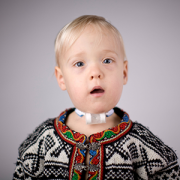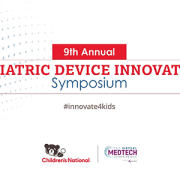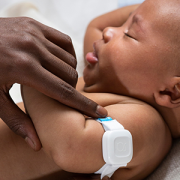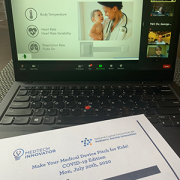Inequity complicates care for children with tracheostomies
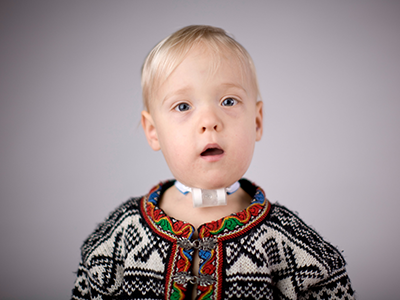
Study finds healthcare inequities complicate care of children with tracheostomies.
Approximately 4,000 children in the United States annually undergo tracheostomies, a lifesaving procedure for severe respiratory compromise or upper-airway obstruction. While children with tracheostomies are living longer because of technological advances, their caretakers encounter a variety of issues once at-home care begins, as reported in a study published in Qualitative Health Research.
The study identified lingering problems from the lack of equitable access to appropriate support for patient families and caregivers. Jules Sherman, M.F.A., director of the Biodesign Program at Children’s National Innovation Ventures, led the research in collaboration with Kyle L. Bower, Ph.D., a researcher and instructor at The University of Georgia, and Kolaleh Eskandanian, Ph.D., M.B.A., P.M.P., vice president and chief innovation officer at Children’s National.
The big picture
Interview subjects were 11 primary caregivers of children ages 16 months to 11 years who had a tracheostomy and were supported by multiple lifesaving devices at home such as a ventilator, humidifier and other required medical supplies.
Subjects were questioned about influences and relationships they believed impacted the trajectory of care given to children with tracheostomies. Three themes emerged:
- Insufficient peer support: Caregivers struggled to find groups who shared similar experiences to help them navigate the uncertainty surrounding their child’s medical care, and content on social media peer groups sometimes heightened their sense of worry.
- Ineffective trach-care training:
- For families — Caregivers said the trach-care training they received at their respective hospitals did not reflect real-time situations at home, resulting in high levels of anxiety, multiple home emergency situations and routine calls to 911.
- Home health nurses — Caregivers shared instances of poor decision-making by at-home nurses in emergency situations, lack of communication with primary caregivers and lack of respect for their input.
- Challenges facing integrated care: The absence of cohesion between medical professionals, durable medical equipment (DME) companies and insurance providers creates many challenges for caregivers. Due to the excessive cost of lifesaving medical devices and negative interactions by caregivers with insurance companies and DMEs, some caregivers reported turning to the black market to purchase needed medical supplies.
Why it matters
In the United States, 60 percent of children with tracheostomies are readmitted to the hospital for tracheostomy-associated respiratory infection within the first six months of the surgery. This study highlights systemic failures and inequities within the healthcare system, beginning at the hospital and following affected families into their homes, indicating that improvements in the support system, training and healthcare coverage are sorely needed.
The need for a better tracheostomy solution was introduced to Children’s National’s Innovation Ventures by two hospital physicians who are otolaryngologists, Habib Zalzal, M.D. and Rahul Shah, M.D., M.B.A. Followed by an initial market study and design by design firm Archimedic, study author, Sherman, continues working with clinicians at Children’s National and engineers at the University of Oregon and University of Maryland to enhance the prototype developed at Children’s National. The device, called as Trach Sense, is designed to detect accidental decannulation and obstruction events, which are leading causes of tracheostomy-related complications.
This study was supported by the Food and Drug Administration grants P50FD006430 and P50FD007965. The contents are those of the authors and do not necessarily represent the official views of, nor an endorsement, by the FDA, Department of Health and Human Services or the U.S. government.

